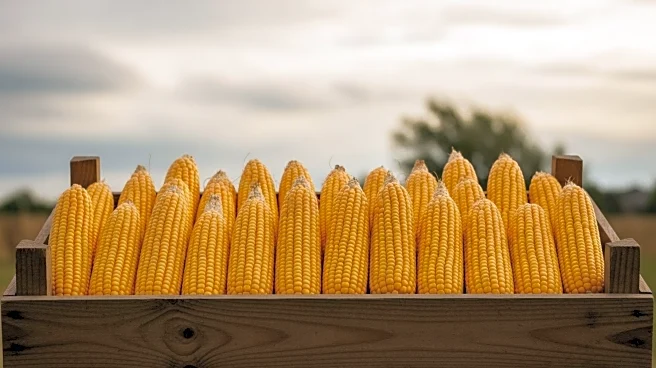What's Happening?
The U.S. corn market is experiencing a significant shift as the USDA forecasts record production levels for 2025. The projected yield is 188.8 bushels per acre, leading to an estimated total production of 16.7 billion bushels. This increase in yield and acreage is expected to exert downward pressure on corn prices. However, strong export demand from countries like Mexico, Japan, and Colombia is helping to offset oversupply concerns. Despite these positive indicators, the market faces challenges from erratic weather patterns and crop diseases.
Why It's Important?
The record production levels could have a profound impact on the agricultural sector, influencing corn prices and affecting farmers' profitability. Lower prices might benefit consumers and industries reliant on corn, such as biofuel production. However, farmers may face financial strain due to reduced revenue from lower market prices. Additionally, weather-related risks and geopolitical tensions could further complicate market dynamics, affecting long-term planning and investment strategies.
What's Next?
Investors and farmers will need to employ strategic hedging techniques to navigate the volatile market conditions. Monitoring weather forecasts and geopolitical developments will be crucial for making informed decisions. The USDA's monthly reports will provide updates on yield revisions, potentially triggering price fluctuations. Stakeholders may also explore advanced data analytics to optimize risk management and pricing strategies.
Beyond the Headlines
The interplay between record production and global demand highlights the complexity of agricultural markets. Climate change and geopolitical factors add layers of uncertainty, requiring adaptive strategies from all market participants. The situation underscores the importance of balancing optimism with prudence in commodity trading.













